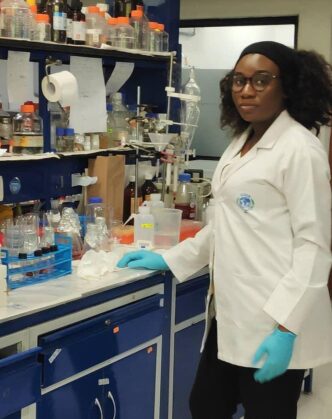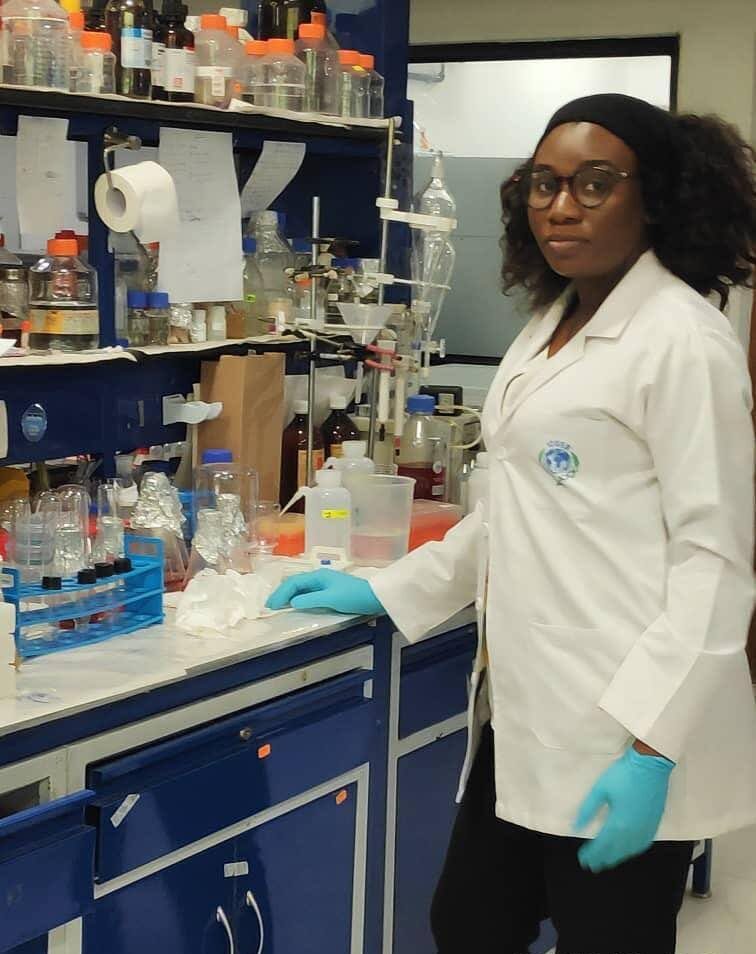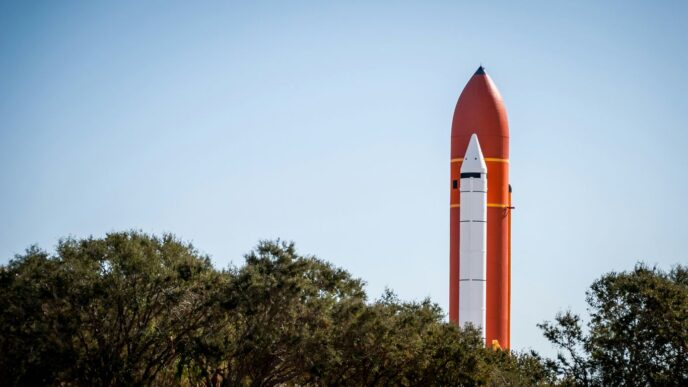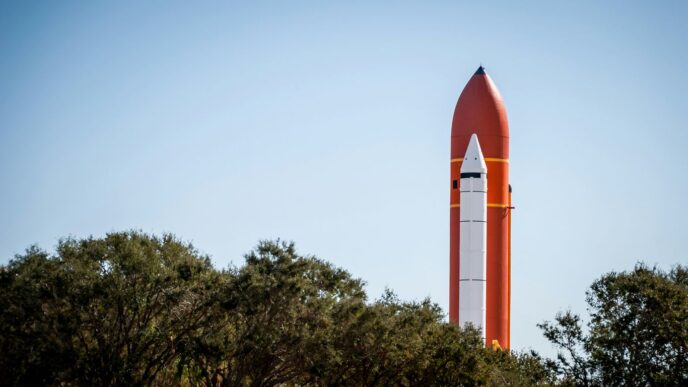In the world’s race to reach net-zero emissions, scientists are searching for new ways to turn agricultural waste into clean, affordable energy. One of the most promising routes is the production of bioethanol from plant materials. Yet, making this process efficient enough for industrial use has remained a formidable challenge. At the centre of this scientific transformation stands Dr. Omoaruemike Ebele Okereke, a biochemist and molecular biotechnologist from Nigeria whose research on the fungus Penicillium funiculosum could change the economics of biofuel production. Her paper, published in Applied and Environmental Microbiology in September 2023, offers the most detailed molecular map to date of one of the enzymes that drive biomass breakdown. The implications stretch from energy security to the global bioeconomy.
“We wanted to understand these enzymes in a way no one had before”
In an interview, Dr. Okereke explained her motivation. “The goal was to go beyond identifying a single enzyme in the fungus. We wanted to see the whole picture—how each β-glucosidase works, how it contributes to efficiency, and how we can engineer it to perform better. That’s the foundation for affordable, sustainable biofuels.” Her work addresses a problem that has long frustrated industrial scientists: the shortage of efficient enzymes capable of converting lignocellulosic biomass into fermentable sugars.
Why β-Glucosidase Matters
The enzyme β-glucosidase performs the final and most energy-critical step in breaking down cellulose into glucose. In most commercial processes, the fungus Trichoderma reesei is used to generate cellulase enzymes, but it produces β-glucosidase in low quantities. Manufacturers must import extra enzymes from other organisms—an expensive and inefficient solution. Okereke’s study found that Penicillium funiculosum produces a naturally balanced mix of cellulases, including powerful β-glucosidases. Of the eight β-glucosidase genes identified, three—PfBgl3A, PfBgl3B, and PfBgl1A—proved essential. When PfBgl3A was deleted, β-glucosidase activity dropped by 42 percent; when PfBgl3B was removed, it fell by 73 percent. “These enzymes are the molecular machines of biomass conversion,” says Okereke. “By understanding their characteristics and contributions, we can design fungi that do the entire job efficiently. That means cleaner energy and lower costs.”
From Abuja to New Delhi: A Global Collaboration
The research was conducted at the International Centre for Genetic Engineering and Biotechnology (ICGEB) in New Delhi, where Okereke worked as an Arturo Falaschi Postdoctoral Fellow, in partnership with India’s Department of Biotechnology. She also represents Nigeria’s Sheda Science and Technology Complex (SHESTCO), where she continues to drive applied bioenergy projects. “Science shouldn’t have borders,” she says. “We are dealing with shared global problems—climate change, energy poverty, and waste. Collaboration is not optional; it’s essential.”
The Power of Multi-Omics
Okereke’s study stands out for its use of multi-omics integration—combining genomic sequencing, gene expression profiling, proteomic mapping, and 3-D molecular modelling. Her team identified the exact architecture of each enzyme’s active site. PfBgl3A and PfBgl3B showed deep, narrow catalytic channels typical of the GH3 enzyme family, while PfBgl1A’s broader pocket gave it superior glucose tolerance. High-resolution simulations revealed hydrogen-bond interactions between specific residues such as Asp 273, Arg 152, and Glu 502—details that will allow engineers to enhance enzyme efficiency through genetic modification. “We can now predict how each enzyme behaves under industrial conditions,” Okereke explains. “That kind of precision means we can re-engineer them for better heat stability and higher conversion rates.”
Industrial Impact
Enzyme costs represent almost 40 percent of total bioethanol production expenses. Any improvement in enzyme performance or stability translates directly into economic advantage. By characterising the β-glucosidases of P. funiculosum, Okereke’s work provides a pathway for developing single-organism enzyme systems, eliminating the need for costly external supplementation. “If industries can use one fungal system that produces all required enzymes efficiently, we cut costs, save time, and reduce the carbon footprint,” she notes. This research aligns with the UK Government’s Net Zero Strategy and the broader European Green Deal, both of which emphasise bio-based innovation and circular manufacturing.
The UK Connection
The UK’s biotechnology sector is already exploring partnerships in bio-catalysis and green chemistry. Okereke’s research complements initiatives led by the Centre for Process Innovation (CPI), UK Research and Innovation (UKRI), and BBSRC, all of which invest in low-carbon process development. Her findings present an opportunity for technology transfer and joint development between African research institutions and British biotech firms, particularly in enzyme design, strain engineering, and waste-to-energy systems. “We share the same priorities,” she says. “Clean energy, sustainable production, and scientific transparency. I would welcome collaboration with UK partners to scale these technologies.”
Africa’s Rising Bioeconomy
Beyond its technical significance, Okereke’s success reflects a shift in how Africa engages with advanced science. Rather than being a consumer of foreign technology, countries like Nigeria are now contributing original research. “Africa has the biological resources, the biodiversity, and the people,” she says. “Our challenge is infrastructure. But that is changing, and our scientists are showing the world what’s possible.”
Future Outlook
Dr. Okereke envisions a network of bio-refineries across Africa and beyond, converting agricultural residues into biofuels, bioplastics, and renewable chemicals. “We already have the raw materials,” she explains. “What we need are partnerships, investment, and policies that support sustainable production.” Her research, though rooted in molecular detail, has far-reaching implications for energy policy, waste management, and industrial sustainability. “If our science helps the planet breathe a little easier, then we’ve done something worthwhile,” she adds.
Reference: Okereke, O. E., Gupta, M., Ogunyewo, O. A., Sharma, K., Kapoor, S., Sinha, T., & Yazdani, S. S. (2023). Profiling of the β-glucosidases identified in the genome of Penicillium funiculosum: Insights from genomics, transcriptomics, proteomics, and homology-modelling studies. Applied and Environmental Microbiology, 89(9), e00704-23. https://doi.org/10.1128/aem.00704-23














